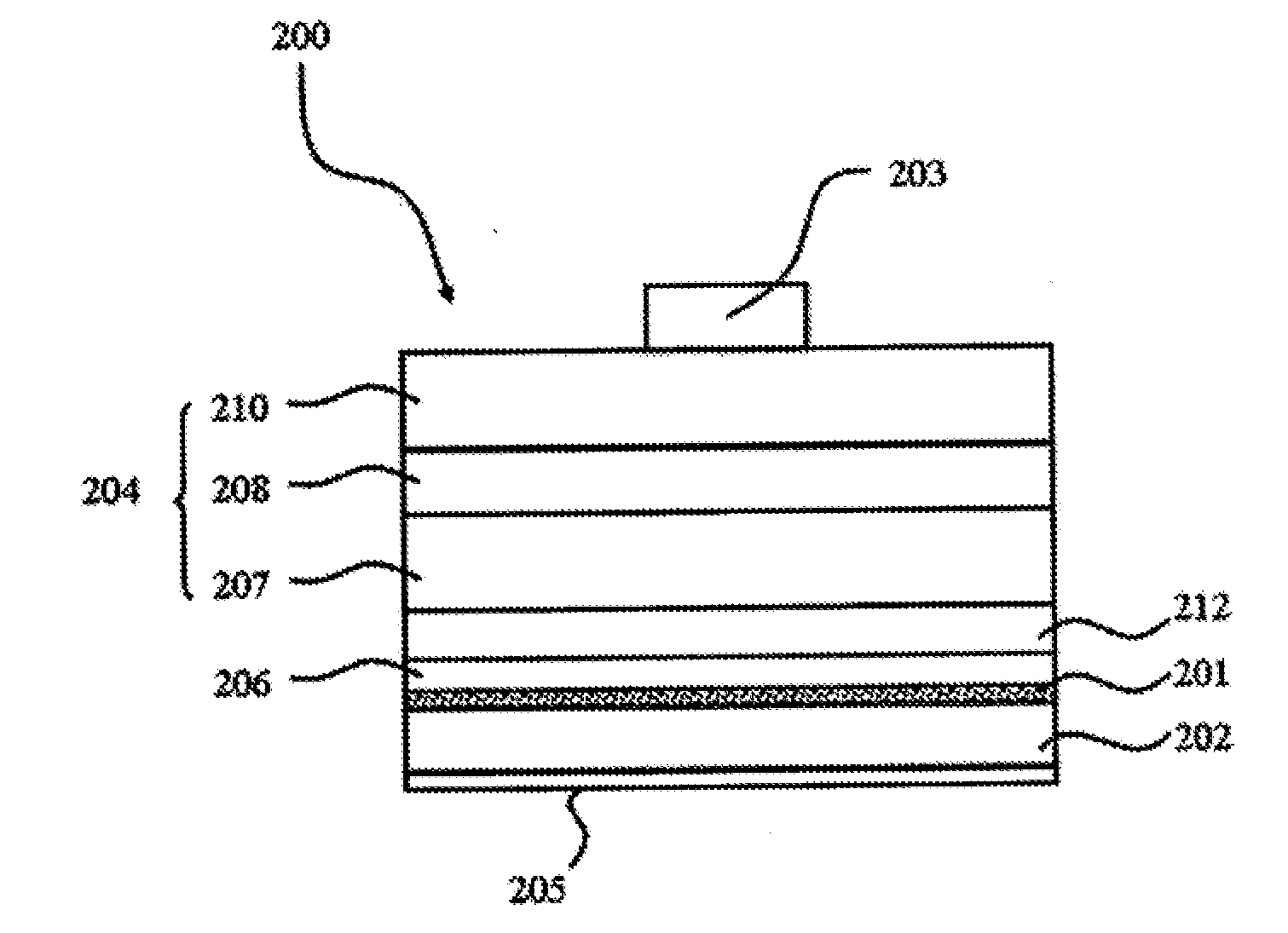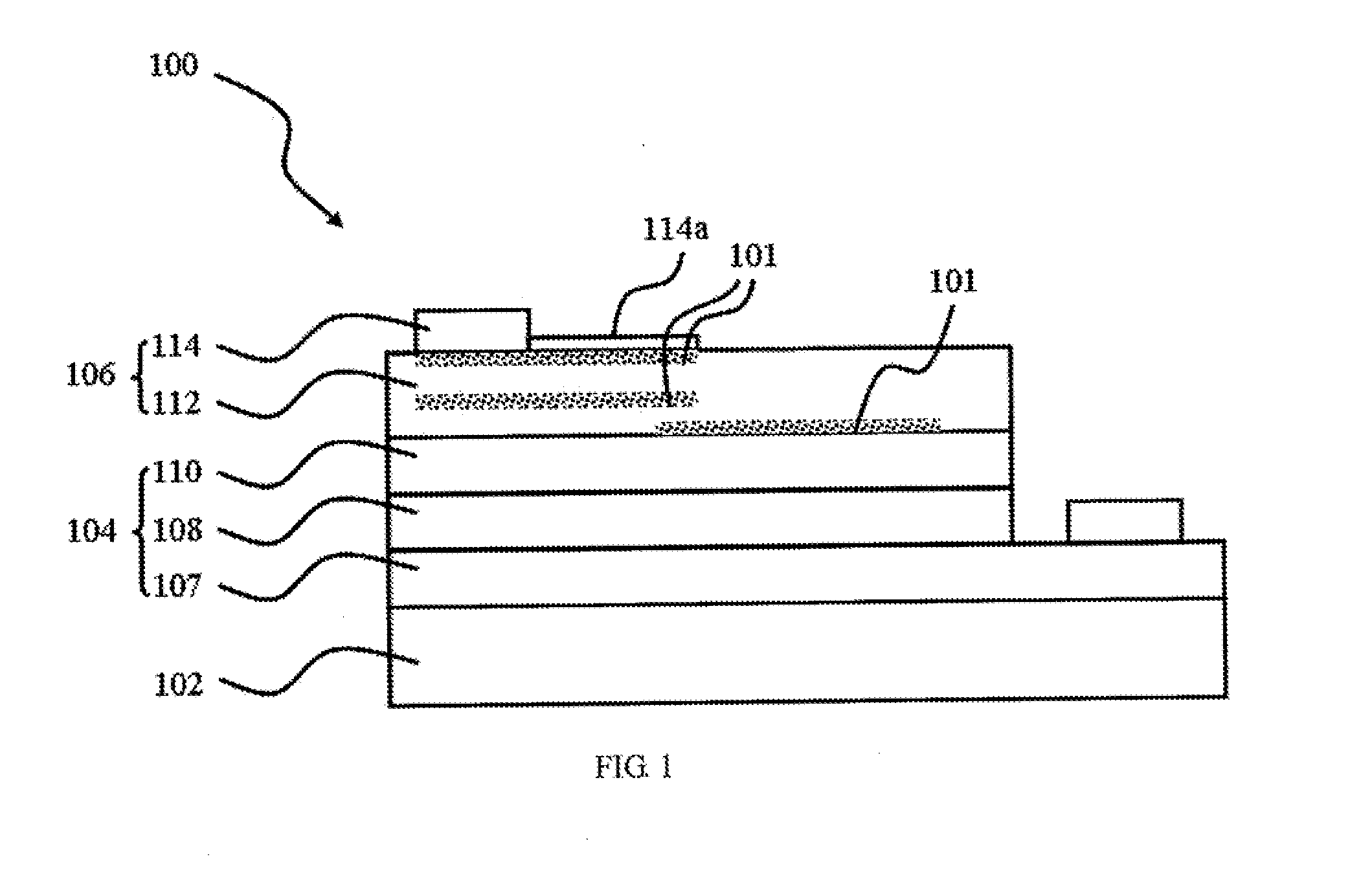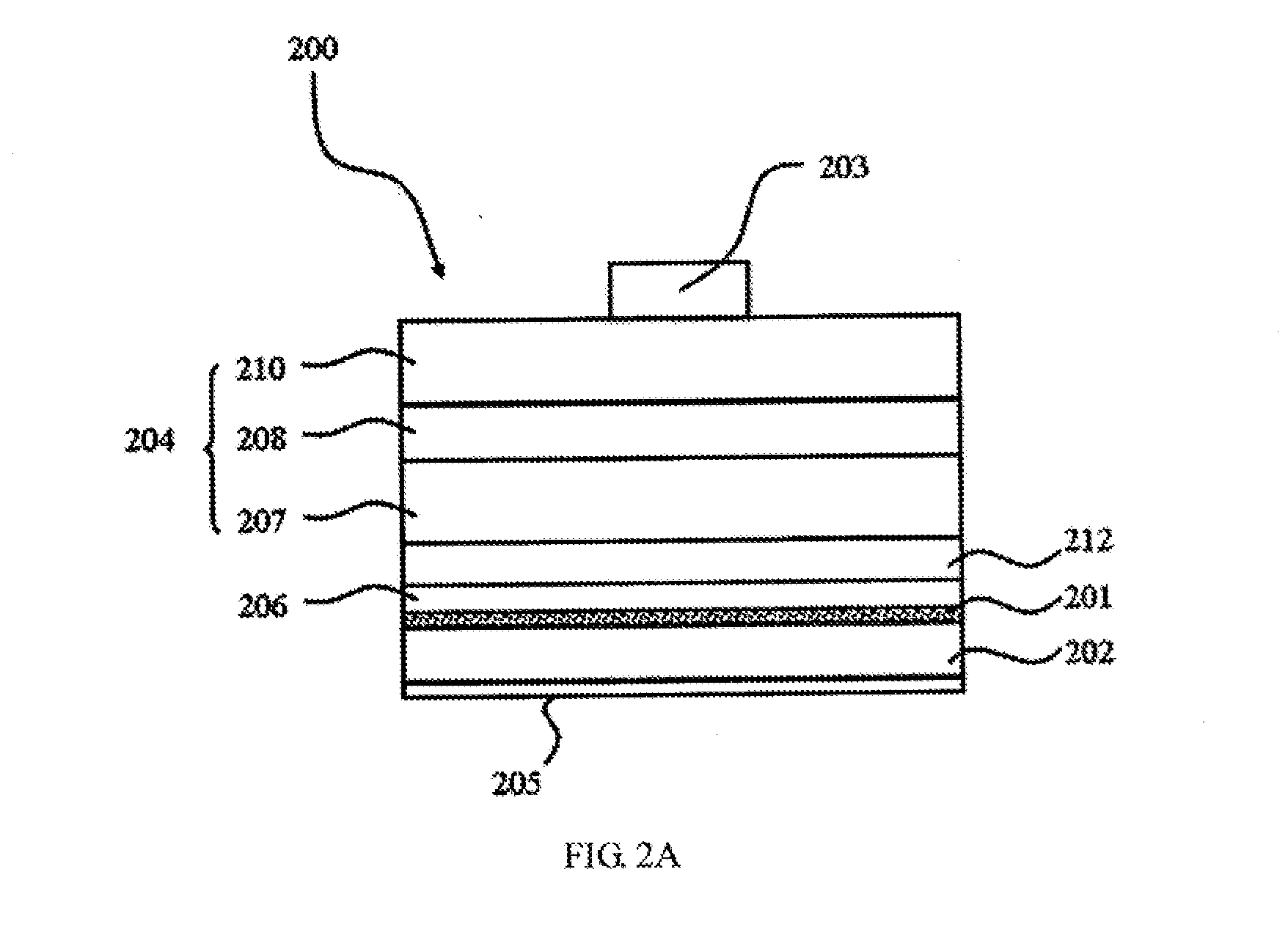Photoelectrical element having a thermal-electrical structure
a photoelectrical element and thermal-electrical technology, applied in the field of photoelectrical elements, can solve the problems of reducing the recombination rate of electrons and holes, not spreading current well, and affecting the electrical performance of the element,
- Summary
- Abstract
- Description
- Claims
- Application Information
AI Technical Summary
Benefits of technology
Problems solved by technology
Method used
Image
Examples
Embodiment Construction
As shown in FIG. 1, a photoelectrical element 100 illustrated in the first embodiment of the present application comprises: a substrate 102; a photoelectric conversion stacked-layer 104 formed on the substrate 102; a conductive structure 106 formed on the photoelectric conversion stacked-layer 104; and a thermal-electrical structure 101 formed inside the conductive structure 106. The photoelectric conversion stacked-layer 104 comprises a first semiconductor layer 107 formed on the substrate 102, a photoelectric conversion layer 108 formed on the first semiconductor layer 107, and a second semiconductor layer 110 formed on the photoelectric conversion layer 108, wherein the first semiconductor layer 107 may be the n-type semiconductor layer, the second semiconductor layer 110 may be the p-type semiconductor layer, and the photoelectric conversion layer 108 is used to emit the light. The photoelectrical element 100 of the embodiment is a light emitting element, or a solar cell when th...
PUM
 Login to View More
Login to View More Abstract
Description
Claims
Application Information
 Login to View More
Login to View More - R&D
- Intellectual Property
- Life Sciences
- Materials
- Tech Scout
- Unparalleled Data Quality
- Higher Quality Content
- 60% Fewer Hallucinations
Browse by: Latest US Patents, China's latest patents, Technical Efficacy Thesaurus, Application Domain, Technology Topic, Popular Technical Reports.
© 2025 PatSnap. All rights reserved.Legal|Privacy policy|Modern Slavery Act Transparency Statement|Sitemap|About US| Contact US: help@patsnap.com



